Original title: Hello World. Hello Sonic.
Original author: Foxi_xyz, researcher at DeFi & AI
Original compilation: ChatGPT
Editor’s note: The author introduces Sonic’s background, Tokenomics design and how DeFi flywheel works, analyzes potential risks in the ecosystem, and explains in detail how to profit from this mechanism. By screening multiple projects in the Sonic ecosystem, the author recommended opportunities for readers in areas including DEX, lending, derivatives and meme, aiming to help readers seize high-potential projects.
The following is the original content (the original content has been compiled for ease of reading and understanding):
I have made Sonic’s ultimate operating manual for you, especially if you’re not familiar with DeFi flywheels. Andre Cronje sells 20+ projects a day, so I selected good projects for you.
I started playing encryption because of the DeFi summer of 2020, and I was so happy that AC and its chain were finally back. Like a normal tutorial, this article will take an in-depth look at Sonic development. However, I would first like to introduce the risks in the DeFi flywheel ecosystem. I’m not responsible for your loss, but I want to explain to the newcomers the mechanism behind the DeFi flywheel. (If you only want to know “CA”, please skip to Part 4.)
Flywheel = Ponzi scheme? When to run away?
The core of many DeFi Flywheels is the mismatch between the timing of capital deployment and its true value being recognized-a phenomenon often summarized as “entering when no one knows and exiting when everyone knows.”
Early liquidity injections generated momentum, attracted more participants, and created self-reinforcing growth cycles. Basically, early participants benefit through compound interest rewards, and as liquidity accumulates and the system gains recognition.
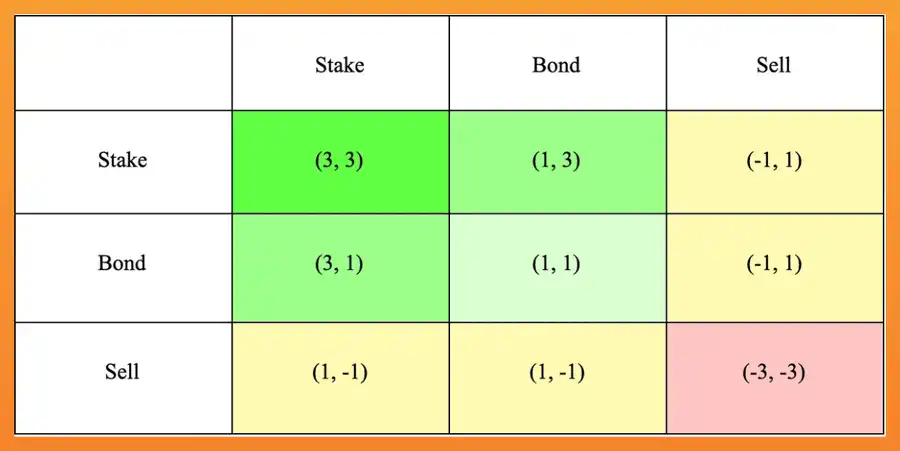
Andre Cronje introduced the ve(3,3) token economics model through Solidly Exchange on Fantom. This model combines Curve Finance’s voting trusteeship (ve) and Olympus DAO’s (3,3) game theory to adjust incentives for token holders and liquidity providers, reducing selling pressure and enhancing sustainability.
The goal of the ve(3,3) model is to reduce selling pressure and enhance liquidity by rewarding user transaction fees for locked tokens. It aims to address unsustainable inflation issues like liquidity mining and focuses on fee generation rather than passive issuance.
Since Fantom has now changed its name to Sonic, you can expect that ve(3,3), or DeFi flywheel, will still be the core concept of Sonic DeFi.
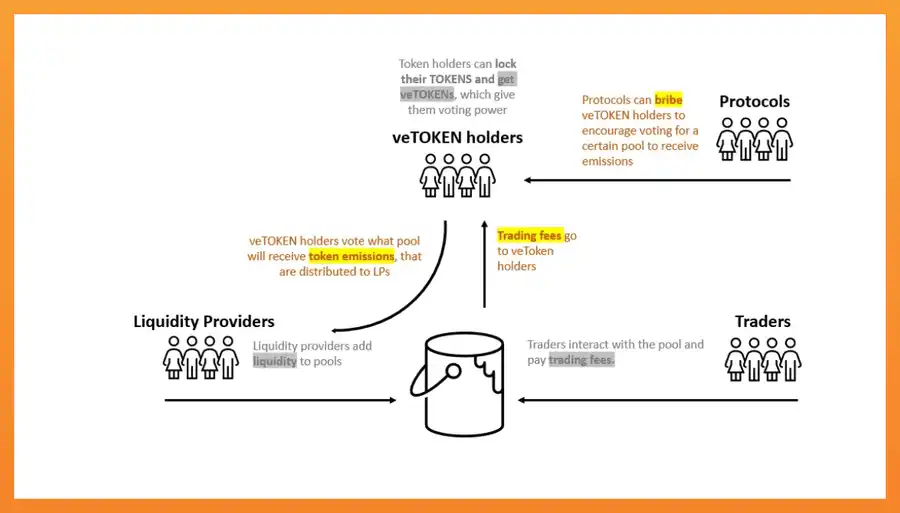
Flywheels are one of the driving forces behind DeFi’s prosperity, and one of Andre Cronje’s products is @yearnfi. Its token, YFI, rose from $6 to more than $30,000 in less than two months. And you know, like many other meme coins, there will eventually be an end. Basically, except Bitcoin, the most important thing for all encryption projects is when to enter and when to exit.
What is Sonic and why you chose Sonic
No one cares, but Sonic’s original name is Fantom. It is a high-performance Layer-1 solution with over 10,000 transactions per second and sub-second finality. Its local token,$S, is used for transaction fees, staking and governance, and existing Fantom users can upgrade their $FTM token to $S in a 1:1 ratio.
Most people don’t really care about another low-latency Layer 1 because we already have a lot of similar projects in this space. Therefore, there are three practical reasons why Sonic has emerged:
·Andre Cronje returned to lead his project as DeFi OG.
·Airdrop plan: Sonic distributes $190.5 million (approximately 6% of total supply) through an incentive plan to attract new users (see Part 3 for more information).
·People are tired of meme coins and are starting to return to more basic DeFi games, as can be seen from the low price of $SOL.
Recent capital inflows also indicate the market’s interest in Sonic, which is reflected in:
·Local token $S rose 113.5% in 14 days
· Sonic TVL rose 70% in 7 days, performing best among any reasonably sized chain
·The FDV/Fee ratio is 283x, 57% lower than its peers, indicating that Sonic may be underestimated compared to its revenue generation.
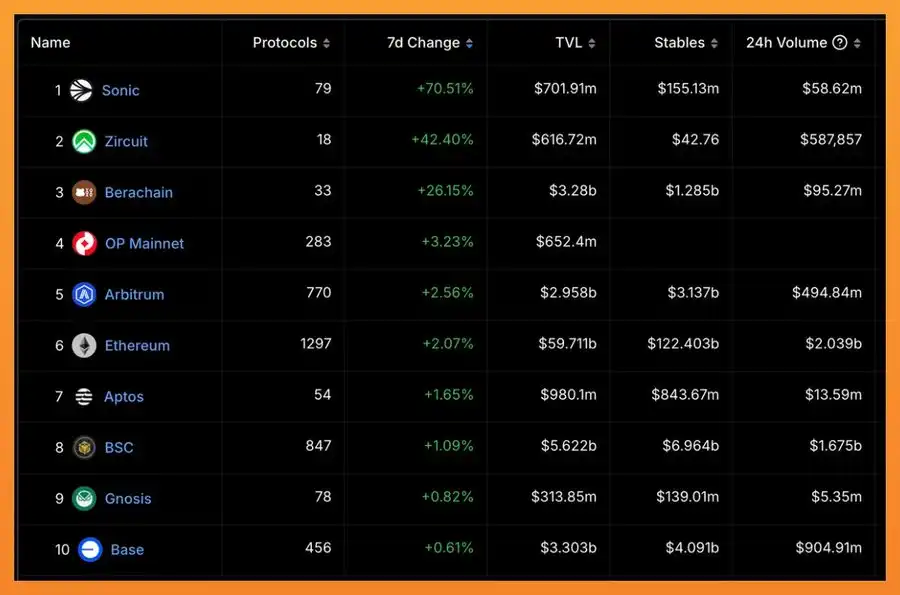
New Tokenomics (boring but important)
Supply and inflation
Fantom’s maximum FTM supply is approximately 3.175 billion tokens (most of which have been fully diluted). Sonic’s supply of $S tokens is the same, ensuring that existing FTM can be exchanged 1:1. However,$S is not a fixed supply of tokens; it has controlled inflation to fund growth. About 6% of the total supply of $S is minted for user and developer incentives (airdrops). This means that approximately $190.5 million of S will be airdropped about six months after launch. Therefore, there will be no new supply (unlocked) until June 2025, which may be a good time for a short-term transaction.
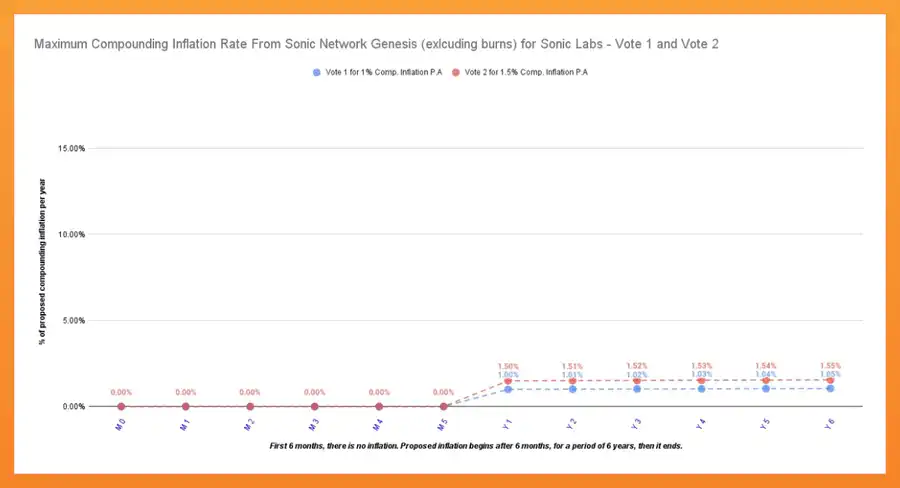
In addition,$S will be inflated by 1.5% per year for the first six years (approximately 47.6 million $S in the first year) to support continued ecosystem funding. If fully used, the supply could reach approximately 3.66 billion tokens in six years. In contrast, the issuance of FTM is basically complete and there are no new token rewards (excluding any remaining staking rewards). Sonic’s approach deliberately introduces moderate inflation to invest in growth, but strictly controls it-any unused funding tokens will be destroyed to avoid excessive inflation.
Cost destruction and deflation
FTM’s economic model does not include significant fee destruction-on Opera, gas fees are distributed to validators (15% to developers after 2022), so FTM is generally inflationary (the stake rewards exceed any token destruction).
S introduced multiple deflationary pressures to balance new issues. As mentioned earlier, 50% of all transaction fees on Sonic will be destroyed by default (transactions that are not in the gas reward program). If network usage is high, this could turn S into net deflation. In addition, the airdrop design uses an “attribution with destruction” mechanism: users can immediately receive 25% of the airdrop, but must wait for the rest. If they choose a faster method of ownership, they will give up some to punish short-term selling.
Finally, any unused 1.5% of annual ecosystem funds will be destroyed. Taken together, these destruction and controlled release plans are likely to offset most of six years of inflation and help the $S gradually move towards deflation after the initial growth period ends.

User incentive plan
As mentioned earlier, Sonic is distributing $190.5 million in S tokens to reward users. You can earn airdrops in the following ways:
·Hold an asset on the whitelist and make sure it is not an asset in CEX’s wallet
·Use Sonic’s DeFi protocols, including staking $S, providing mobility on DEX, yield farming, etc. DeFi activities have a point weighting of 2 times that of holding only assets.
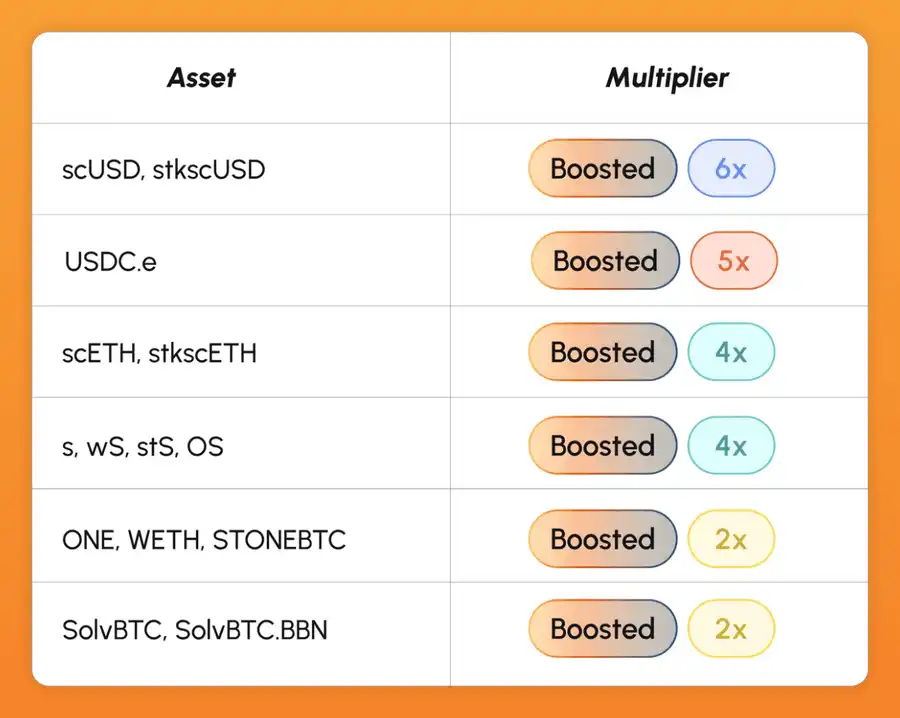
Opportunities in Ecology
You can get $S airdrops by holding assets or participating in Sonic’s ecosystem. Sonic is a new ecosystem, so many new projects may present a high founder risk, but they can also be an alpha opportunity for you to get 10-100 times your profits. Here are some of the potential projects I have carefully selected from four areas (DEX / Lending / Derivative / Meme). (All of these are non-paid and are just my personal sharing)
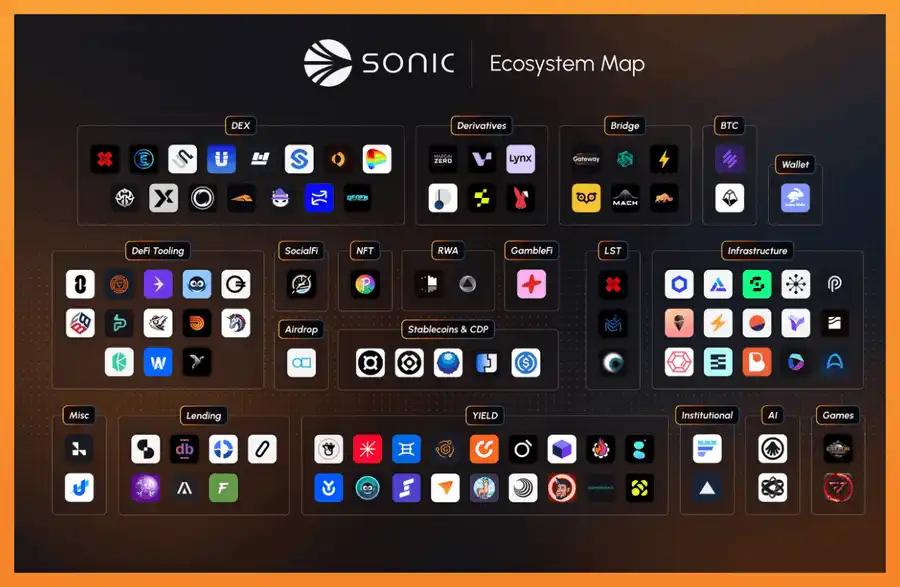
There seem to be a lot of things in the picture, but most of them are not “opportunities.” They are not native to Sonic or have been online for some time. Here are the practical opportunities.
DEX
@ShadowOnSonic
The leading local DEX on Sonic has a TVL of more than 150 million and a weekly incentive of US$13.73 million. Its x(3,3) token model provides users with flexibility, allowing instant exit or attribution at a selected time, unlike the long-term lockdown in ve(3,3). It also has a PVP re-benchmark mechanism that protects against dilution and encourages long-term holding by imposing a 50% voting penalty on early quitters.
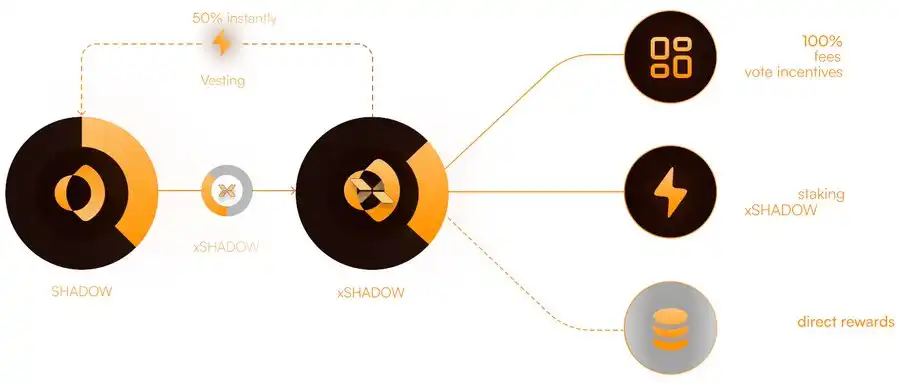
@MetropolisDEX
A DEX on Sonic that has the Dynamic Liquidity Market Manufacturer (DLMM) protocol that combines AMM and orderbook features. Players from Solana and farmers from Meteora will love this.
@vertex_protocol
A DEX that provides spot, perpetual contracts and money markets with cross-margin functionality. It has low fees (0% maker, 0.02% taker), fast order execution and cross-chain liquidity. It is a true DeFi OG team.
@wagmicom
One of the local DEXs on Sonic has high transaction volume. $1.2 billion was processed in less than two months. Users earn more than $3.6 million in fees through LP strategies, which enhances revenue based on Sonic’s speed and scalability. May become a strong competitor to Shadow.
lending
@SiloFinance
Provide non-authorized and risk-isolated markets. It supports the rapid deployment of new trading markets without integration, and the average daily trading volume reaches a peak of 125 million.
@eggsonsonic
Provide secured loans, executed according to smart contracts, and have functions such as buying and selling fees and clearing events.
@eulerfinance
Modular lending protocol supports unauthorized lending, similar to Ethereum’s Morpho.
@VicunaFinance
Provide leveraged income farming and provide unsecured loans.
derivatives
@Rings_Protocol
A yuan asset agreement for income-based stablecoins. It provides deep liquidity to Sonic DeFi and funds projects through locked funds.
@spectra_finance
An interest rate derivatives agreement that allows income trading and fixed interest rates. It provides liquidity providers with a hedge against fluctuations in earnings and earns additional interest.
@vfat_io
A revenue aggregator that simplifies revenue farming and rebalancing.
@GammaSwapLabs
A volatility trading platform that requires no oracle. It provides commission-free token trading and liquidity through AMM.
@NaviExSonic
A derivatives trading platform that provides reserve contracts.
Meme
@derpedewdz
The main NFT in the Sonic ecosystem.
@LazyBearSonic
Sonic’s local NFT distribution platform.
@TinHat_Cat
Sonic meme has a good community.
“Original link”



